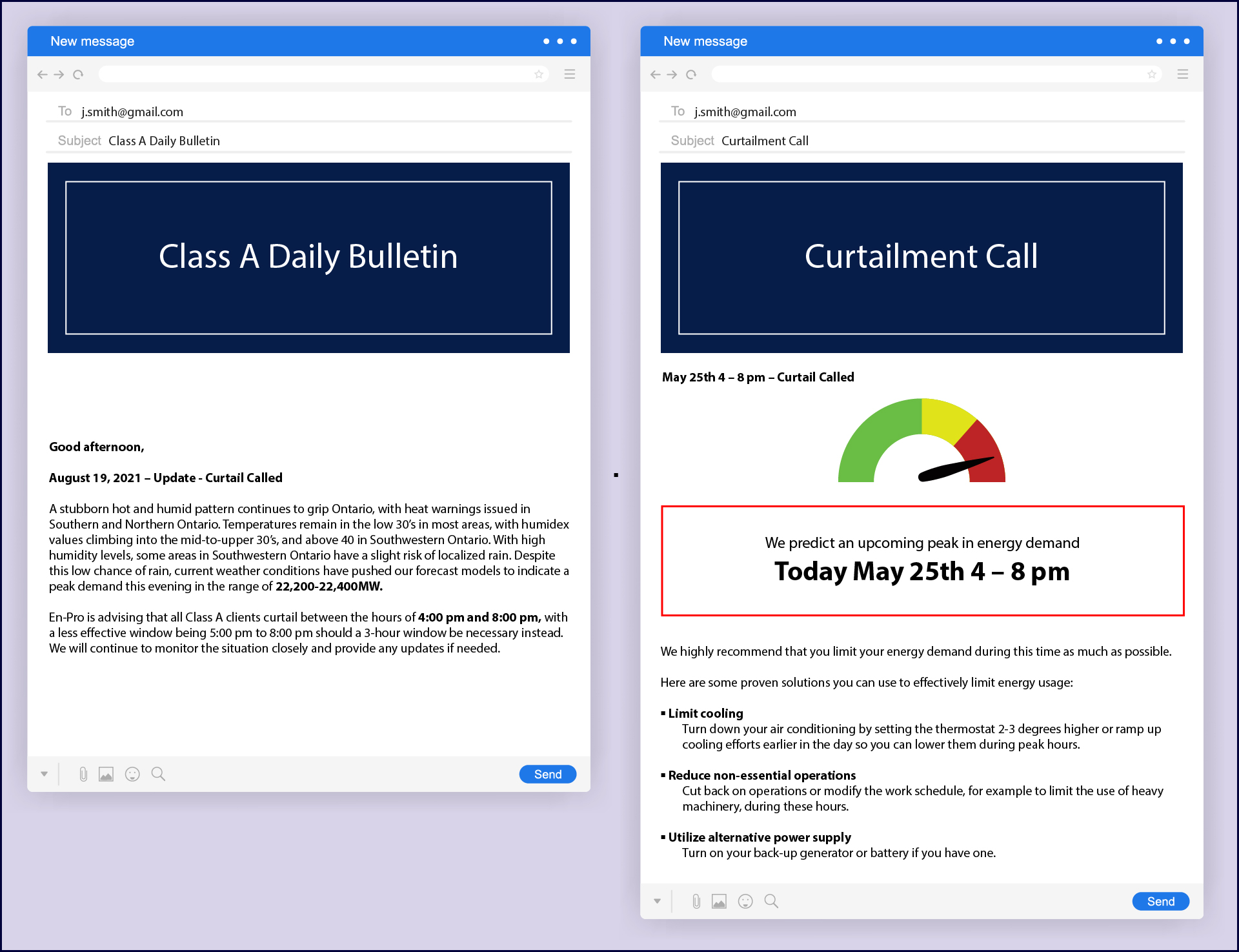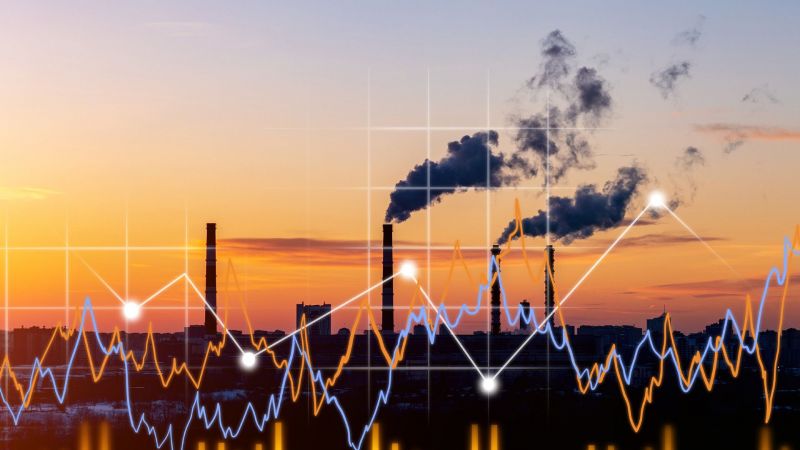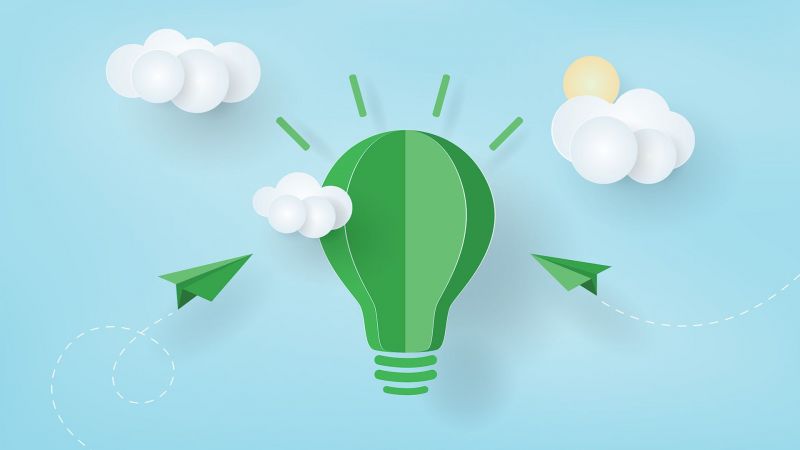Playing the Peak Pricing Game with AI and a Nudge
An innovative study shows how big business and the environment can benefit by optimizing algorithms and human behaviour

Driven by altruism, the desire for a competitive edge or, more likely, the need to control costs, Canada’s biggest energy-guzzling companies spend a lot of time and money trying to reduce their carbon footprint. They retrofit equipment for greater efficiency. They hunt for low-carbon sources of raw materials. They use swarm intelligence to optimize schedules. They tweak product packaging and logistics. Just about every incremental improvement in energy efficiency trickles down to the bottom line and builds energy resilience.
For these firms on the hunt for new ideas, a recently completed study should pique plenty of interest. The novel boundary-spanning study used two types of power tools that are rarely mentioned in the same breath: artificial intelligence and behavioural nudging. By optimizing both algorithms and human psychology, the researchers discovered a promising way to even out the huge demand surges that occasionally hit electrical grids and cost industry so much money. Corporate sustainability executives and policymakers take notice.
Anticipating electricity premiums
The story begins in Ontario with a familiar energy-saving policy: critical peak pricing (CPP). CPP is a form of dynamic pricing employed by many jurisdictions in North America and Europe that involves charging very high electrical prices to households and businesses during a select number of peak periods. The motivation is to reduce the risk of blackouts or utilities drawing on coal or gas for backup power.
All electricity customers in Ontario pay a so-called Global Adjustment, which covers the base cost of operating the electricity system. For jumbo “Class A” energy users — those that participate in the Industrial Conservation Initiative — consuming energy during peaks is extremely expensive, as their Global Adjustment is based on the amount of electricity they consumed during the peak five hours of energy demand over the year. Once the year is over, the peaks are identified, and the company is charged retroactively based on how much their consumption contributed to those five peaks multiplied by the entire province’s Global Adjustment.
Global Adjustment can add up to hundreds of thousands of dollars so big users have an incentive to mitigate their energy use during peak demand periods — perhaps shutting production lines, shifting employee schedules or using backup generators. The challenge, however, is that because the Global Adjustment is based on the entire year’s energy use, anticipating the five peak periods before they happen is like throwing darts while blindfolded. This gives rise to the most loathsome word in the corporate lexicon: uncertainty.
Making energy-saving production adjustments for just a few hours can be costly, and firms will resist making changes if there are too many false calls. Is there a better way to forecast the exact timing of demand peaks?
Critical peak pricing works
This is where the research team of Christopher Amaral of the University of Bath, Ceren Kolsarici and Nicole Robitaille of Smith School of Business and Iina Ikonen of the University of Groningen enter the story. Team members have complementary backgrounds in marketing analytics, artificial intelligence and consumer behaviour. They came together to test a multidisciplinary approach to reduce organizations’ energy consumption in a demand pricing setting.
For data, the researchers partnered with the consulting company En-Pro, which advises large industrial and commercial businesses on their energy use. En-Pro forecasts long-range hourly provincial energy demand and alerts their clients to predicted peak demands when energy consumption should be cut back. The researchers accessed anonymized client-level information for 25 of the largest organizations across nine industries in Ontario, including hourly energy consumption at the location level and hourly energy demand and temperature for the entire province.
From their first analysis of the data, it was clear that Ontario’s critical peak pricing program was accomplishing what it was designed to do for Class A customers, even before the researchers applied their experiments using AI and nudging.
They found that when En-Pro accurately predicted an energy peak and sent a curtailment call to their clients in time for them to adjust, the customers, on average, decreased their contribution to provincial energy demand by 320 kWh per hour — comparable to the biweekly energy consumption of an average household in Ontario. This represented an average annual energy cost savings of $162,000 per organization. (Firms with a backup generator, which makes it easier to cut back energy use quickly, reduced their energy by 31 per cent compared to 19 per cent by firms without generators.)

Tweaking temperature forecasts
The next question was whether the research team could improve the accuracy of En-Pro’s state-of-the-art energy demand forecasts with AI. Using a neural network time series, a form of machine learning inspired by how biological networks function in animal brains, they built a long-range hourly forecasting model for the entire province.
Their neural network model delivered as promised: It was 100 per cent accurate in predicting peak energy demand, compared to the 56 per cent accuracy of the benchmark models. As a result, the researchers were able to wring another $41,000 of savings per organization.
More accurate forecasts also meant greater trust in the curtailment calls. As the researchers note, the Ontario government only uses the top five peaks in the year to calculate the CPP premium for each organization, so any additional curtailment call would be a false alarm. The AI-based forecast led to half the number of curtailment calls sent and only four false alarms (compared to 14 false alarms by the benchmark models).
“The number of false alarms are detrimental,” says Ceren Kolsarici, “because in the long-term, these excess curtailment calls reduce trust in the program, particularly since curtailing energy is costly for organizations.”
Nudge in the right direction
Pleased by the success of their AI model, the research team in the summer of 2022 then turned to improving the curtailment emails that En-Pro sent to clients. These bare-bones notices (see example below, “Class A Daily Bulletin”) feature the peak energy demand forecast, a suggested four-hour curtailment window and suggestions for actions to take.
The researchers mocked up a new email notice based on behavioural economics principles. It has been well documented that seemingly small contextual factors, such as a simple message and planning prompts that communicate the when, where and how of potential actions, can “nudge” people toward a desired behaviour.
Most nudging research focuses on changing individual behaviour. But one of the researchers, Nicole Robitaille, showed in a previous study that planning prompts could be effective at changing tax compliance behaviour at an organizational level as well.
The research team revised the email’s subject line to be more descriptive, highlighted the timing of the curtailment call by enlarging it and added three pieces of advice to reduce energy consumption to make the “how” of the planning prompt more concrete (see revised “Curtailment call” email below).
Based on the predictions from the neural network, the team sent out nine curtailment calls to En-Pro’s clients over the summer, some with the nudge and planning prompts and others with standard messaging.
When they examined the results, the experimental emails outperformed the standard messaging. Clients in the experimental group contributed less to the provincial energy demand during curtailment calls compared to those in the control group. It resulted in a lower average contribution during the top five peaks in 2022 and, consequently, an additional average savings of $120,585 in energy costs.
Best of all, the effectiveness of the nudging email did not diminish over time, even across nine exposures spanning 75 days. The study is among the first to show the lasting effects of nudges aimed at organizations.

Benefits of the AI-nudge tag team
The study’s results suggest that artificial intelligence and behavioural insights employed together improve the effectiveness of critical peak pricing by 99 per cent, measured by the incremental increase in cost savings.
For government policymakers, energy consultants and corporate sustainability experts, there is a lot to like about this study. The government and energy consultants can be satisfied that critical peak pricing is working, and that it can be made even more effective by using a multidisciplinary approach to reduce uncertainty (and by encouraging the use of backup generators).
And Ontario’s biggest energy producers can be more confident to make short-term adjustments in their production processes knowing the investment will mean a smaller energy bill. This is significant considering energy demand peaks are becoming more random and unpredictable.
Kolsarici is clearly pleased by the big payoff from the two-year study. Every one-hour reduction of energy per client due to the team’s AI-nudging intervention was equivalent to roughly 22 days of average household consumption. Companies that were part of the study saw an average cost saving of $350,000.
“The results are even more impressive when you consider that the 25 companies that were part of the study were trained by En-Pro on how to reduce energy consumption and are highly motivated to improve their performance under critical peak pricing,” she says. “This was a very challenging multi-stakeholder problem to address, but the impact has been outstanding for the clients and the environment.”
This project was a finalist in the 2024 Gary L. Lilien ISMS Practice Prize, sponsored by the INFORMS Society for Marketing Science. View the research team’s presentation here.





